Figma Shares Indicated To Open $95/$100
Introduction & Market Context
Goodfood Market Corp (TSX:FOOD) presented its Q3 2025 earnings results on July 22, 2025, highlighting a return to profitability after a challenging second quarter. The company’s stock has faced significant pressure, with shares trading at $0.19, down 20.41% following the presentation, suggesting investors remain cautious despite improved sequential results.
The meal kit delivery company continues to navigate a difficult consumer environment, with active customers declining to 76,000 in Q3 2025 from 105,000 in the same quarter last year. However, management emphasized its focus on higher-value customers and cost discipline to maintain profitability despite these headwinds.
Quarterly Performance Highlights
Goodfood reported net sales of $30.7 million for Q3 2025, representing a 10% increase from the previous quarter but a 20% decline year-over-year. The company achieved a net income of $0.1 million ($0.00 EPS), a notable improvement from the $2 million loss (-$0.03 EPS) reported in Q2 2025.
The presentation highlighted that Q3 marks the tenth consecutive quarter of positive adjusted EBITDA, with the margin improving to 8.6% ($2.7 million) from 4.5% ($1.4 million) in the previous quarter.
As shown in the following chart of adjusted EBITDA and margin trends:
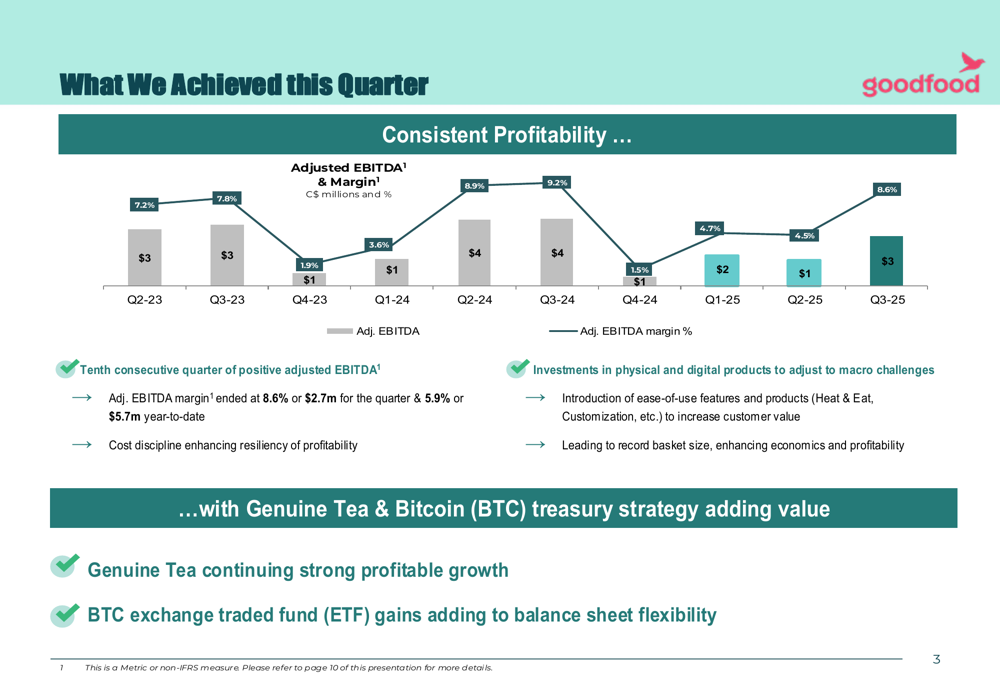
While customer count continued to decline sequentially from 84,000 in Q2 to 76,000 in Q3, net sales per active customer remained stable at $30.7, compared to $30.5 in the previous quarter. Management attributed this to a "continued trend of more profitable customers, helping drive record order value."
The following chart illustrates the net sales and active customer trends:
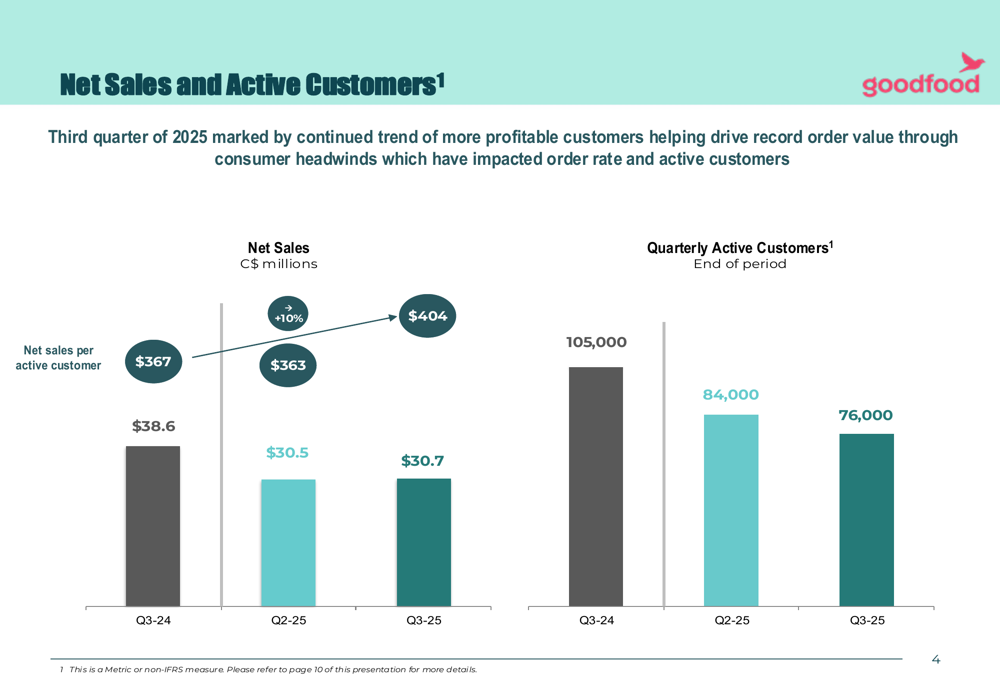
Detailed Financial Analysis
Goodfood’s gross margin improved to 44.3% in Q3 2025, up from 42.6% in Q2 and slightly above the 44.0% reported in Q3 2024. The company credited its "flexible cost structure" for this improvement, which helped offset the impact of lower sales volumes.
The company also returned to positive cash flow from operations at $0.6 million and positive adjusted free cash flow of $0.2 million, reversing the negative figures from Q2 2025. However, these metrics still represent significant year-over-year declines of 87% and 96%, respectively.
The following charts detail the company’s gross profit, adjusted EBITDA, and net income performance:
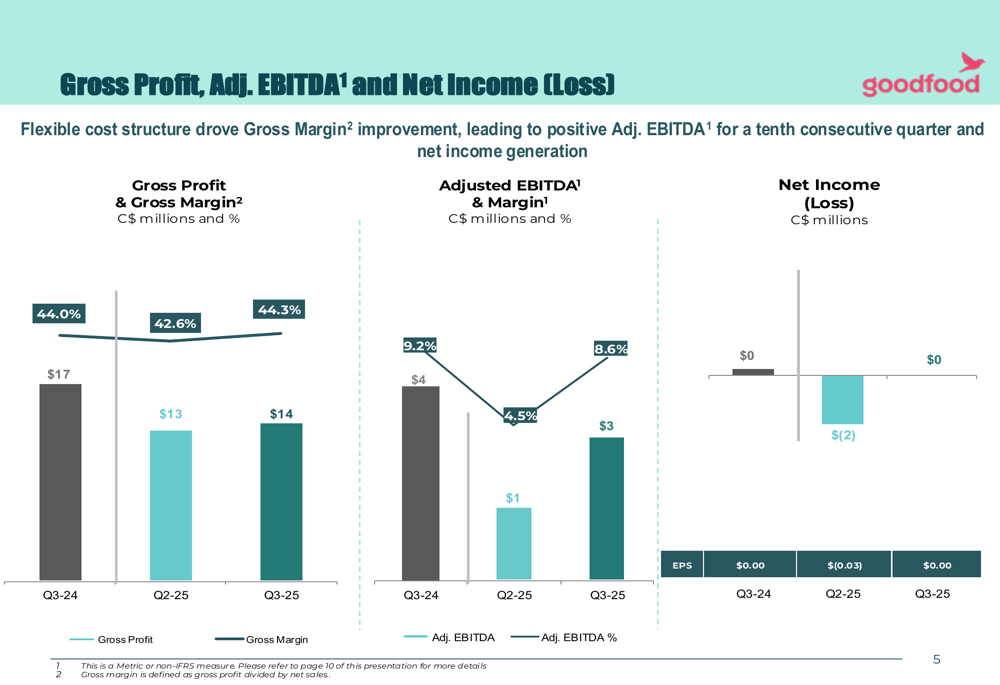
Cash flow metrics showed improvement from the previous quarter but remained well below last year’s levels:
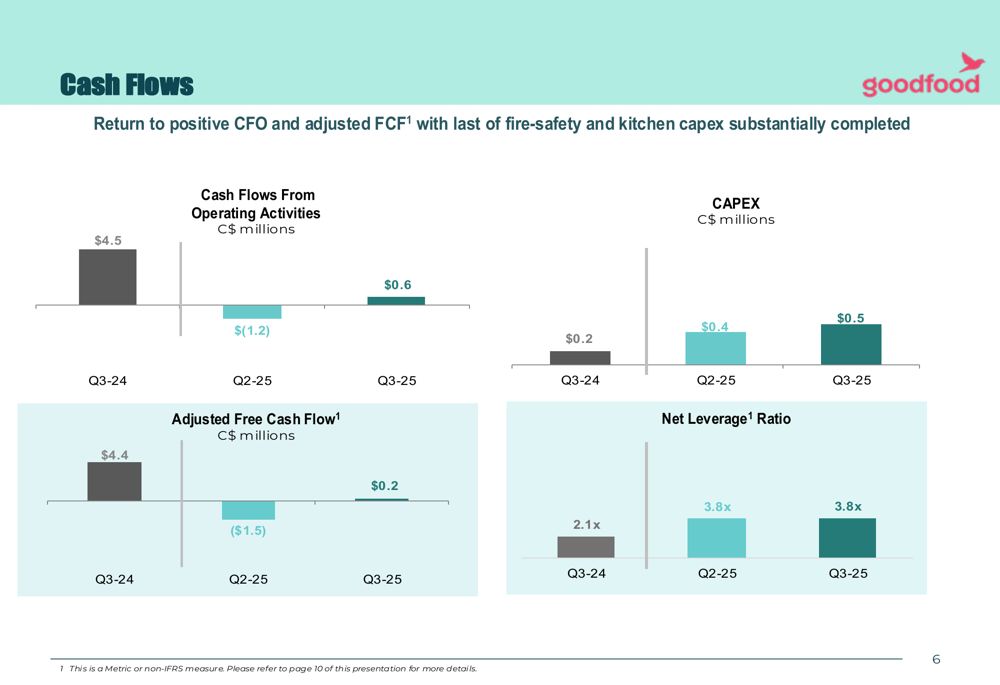
A comprehensive summary of key financial metrics reveals the tension between sequential improvements and year-over-year declines:
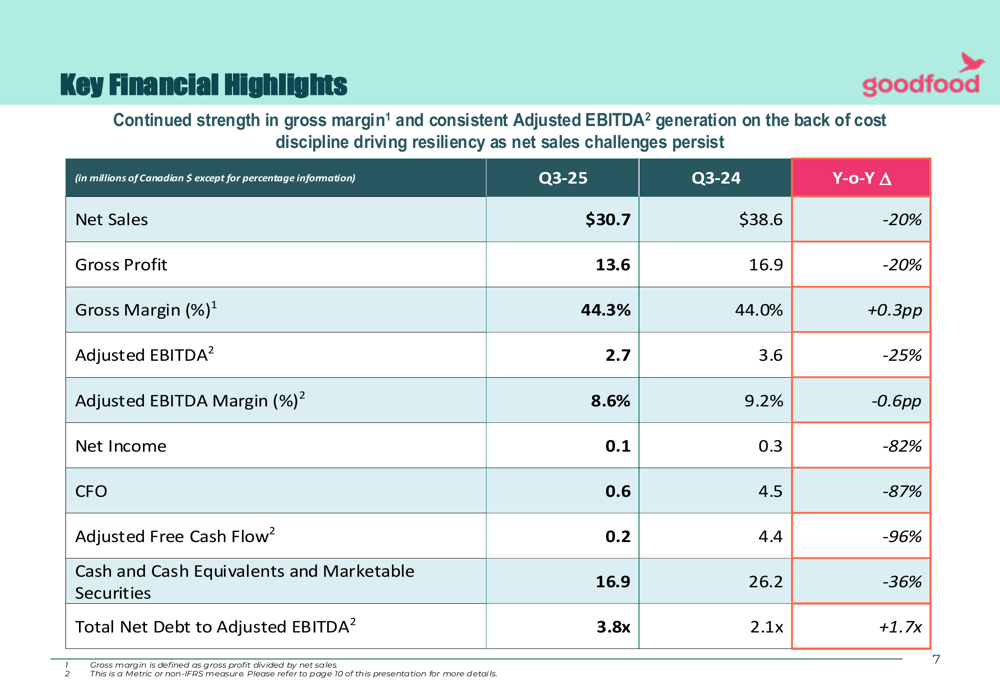
The company’s net leverage ratio remained elevated at 3.8x, unchanged from Q2 but significantly higher than the 2.1x reported a year ago. This higher leverage, combined with a 36% year-over-year reduction in cash and marketable securities to $16.9 million, suggests potential balance sheet pressures despite the return to profitability.
Strategic Initiatives
Goodfood highlighted several strategic initiatives aimed at addressing current challenges and positioning for future growth. The company emphasized its focus on "doing more for the customer in a challenging environment" through value plans and the expansion of its Heat & Eat offerings, which were first mentioned in the Q2 earnings call.
In a notable strategic shift, the presentation revealed Goodfood’s Bitcoin treasury investment strategy, which management claims is "adding to balance sheet flexibility." This represents a significant departure from traditional food delivery business models and may reflect an attempt to diversify amid challenging industry conditions.
The company also highlighted the performance of its Genuine Tea acquisition, which is reportedly growing at 30-40% with positive EBITDA contribution. Management positioned this acquisition as part of a broader strategy to build "a platform for next-generation brands with shared expertise and a network."
The following slide illustrates the company’s strategic outlook:
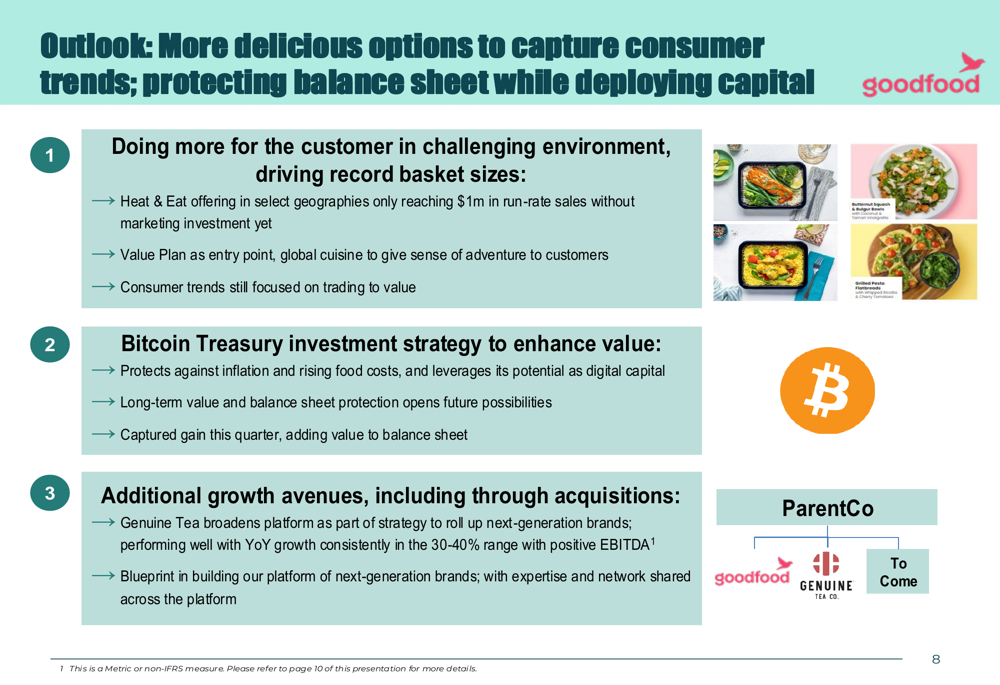
Forward-Looking Statements
Looking ahead, Goodfood emphasized its focus on "capturing consumer trends, protecting the balance sheet, and deploying capital." The company appears to be pursuing a dual strategy of operational optimization and strategic acquisitions to drive growth.
Management indicated that investments in both physical and digital products have been made to adjust to macroeconomic challenges, including the introduction of ease-of-use features designed to enhance customer value and improve economics.
The Bitcoin strategy and acquisition approach suggest Goodfood is seeking alternative growth avenues beyond its core meal kit business, potentially in response to the persistent decline in active customers. However, with the stock price continuing to fall despite improved quarterly results, investors appear to remain skeptical about the company’s ability to reverse the trend of declining customer numbers and year-over-year revenue contraction.
While Goodfood has demonstrated an ability to maintain profitability through cost discipline, the sustainability of this approach amid a shrinking customer base remains a key question for investors going forward.
Full presentation:
This article was generated with the support of AI and reviewed by an editor. For more information see our T&C.
